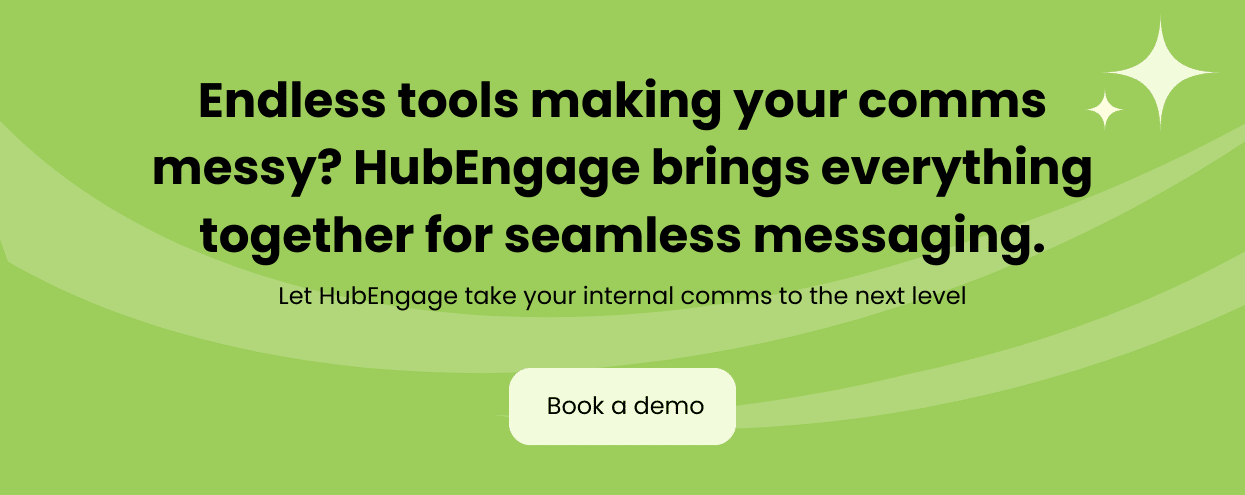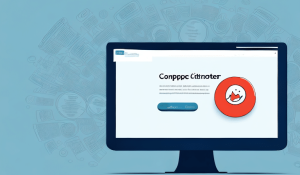Effective internal communication tools and platforms drive organizational success. Companies with strong internal communication strategies are more than 3.5× as likely to outperform their competitors (McKinsey), yet more than 60% still lack a long‑term internal communications plan (Ragan Communications). Meanwhile, employees spend over 2.5 hours per day searching for information—a problem that modern internal communications software can solve. Well‑designed employee communication tools not only streamline updates and improve visibility, they can also boost productivity by 20–25% and strengthen collaboration (Gallup).
This guide explores what internal communication platforms are, why they matter, the benefits, the best categories, and even free internal communication tools that businesses can try before investing in advanced solutions.
👉 Related guides: Best Internal Communication Tools by Channel
What is Internal Communication?
Internal communications is the way organizations share their story and connect employees at all levels. It covers leadership updates, peer‑to‑peer knowledge sharing, project collaboration, and informal exchanges. Strong internal communications tools—from intranets to messaging apps—ensure employees are informed, aligned, and engaged.
Consistency across channels is critical. Using internal communication software to unify voice and delivery helps maintain trust and engagement (Edelman Trust Barometer).
Benefits of Internal Communications
Many small and growing organizations underestimate the importance of internal communications. They often focus on customer-facing systems and only realize later—once headcount grows—that communication gaps erode culture and productivity. By the time they scramble to put a strategy and tools in place, misalignment and disengagement may already have taken root. Starting early ensures employees feel connected from day one, building trust, culture, and resilience as the organization scales.
Studies consistently show that strong internal comms drives measurable outcomes: higher employee engagement and retention (Gallup), stronger alignment with goals, up to 25% higher productivity (McKinsey), and smoother change management processes.
👉 Related: Frontline Worker Communication Strategies & Tools
Avoiding Tool Overload: The Essential Five
Before diving into the full list of categories, it’s important to acknowledge a common problem: too many tools. Many organizations end up with email threads, Slack messages, SharePoint links, texts, and endless meetings—creating chaos instead of clarity. When employees don’t know where to look, critical updates are missed, duplicated, or ignored. Leaders waste time copying and pasting messages across channels, and consistency suffers.
Research from Gartner shows that tool sprawl is a top driver of communication inefficiency. A streamlined approach can solve this. Every organization should begin with five essential internal communications tools:
- A mobile‑responsive intranet and employee app – a hub for resources, policies, and news that employees can access anywhere. Modern intranets also provide branded employee apps for frontline and remote workers.
- An internal email platform – the backbone of communication, purpose‑built for employees, not marketing. Analytics and personalization make newsletters engaging and measurable.
- An employee texting tool – for urgent alerts and frontline communication that cuts through the noise instantly.
- A chat/instant messaging app – for day‑to‑day collaboration, quick answers, and reduced email overload.
- An AI chatbot – to answer HR, IT, and policy questions on demand, providing 24/7 support and reducing repetitive requests.
Quick Reference Tables
Decision Tree: When to Use Email vs. SMS vs. Chat
| Channel | Best For | Avoid For |
|---|---|---|
| Planned updates, policy changes, leadership comms. | Urgent alerts (delivery delays likely). | |
| SMS/Text | Urgent, time‑sensitive alerts (weather, outages, safety). | Detailed or long‑form updates. |
| Chat/IM | Quick collaboration, day‑to‑day questions. | Must‑read compliance/legal notices. |
Essential Five Internal Communications Software at a Glance
| Tool | Purpose | Example Vendors |
|---|---|---|
| Mobile‑Responsive Intranet & Apps | Central hub for resources, policies, and news accessible anywhere. | SharePoint, Simpplr, HubEngage Intranet |
| Internal Email Platform | Employee newsletters with analytics and HRIS‑synced lists. | Workshop, ContactMonkey, HubEngage Email Hub |
| Employee Texting Tool | Instant, urgent communication for frontline/dispersed teams. | AlertMedia, TextMagic, HubEngage SMS Hub |
| Instant Messaging App | Real‑time collaboration, cross‑functional chats. | Slack, Teams, HubEngage IM |
| AI Chatbot | 24/7 HR/IT support, policy Q&A, onboarding guidance. | Moveworks, Leena AI, HubEngage AI Assistant |
Starting with these ensures a strong foundation without overwhelming your workforce. Organizations can buy and manage these tools individually, but that often leads to added cost and complexity. A smarter approach is to adopt a unified multi‑channel platform like HubEngage, which brings intranet, email, texting, chat, and AI chatbots together in a single system. This reduces vendor sprawl, cuts licensing costs, improves adoption, and gives employees one seamless experience to access everything they need.
15 Internal Communication Tools For Organization
When evaluating internal communication platforms, look for features that simplify collaboration, connect distributed teams, and foster engagement. Below are 15 key categories with expanded explanations of their role, why organizations should implement them, and the benefits they deliver:
1. Intranet Platforms
Intranets serve as the backbone of a company’s knowledge and communication ecosystem. They centralize news, policies, documents, and updates, ensuring employees always know where to look. A strong intranet reduces information silos, strengthens culture, and improves onboarding by giving new hires a single source of truth. Modern intranets also integrate with HR and project management tools to enhance productivity.
Examples: SharePoint, Jostle, HubEngage’s Employee Intranet Platform
2. Mobile Internal Communication Apps
Mobile internal communication apps extend communication beyond the desk, keeping frontline and remote workers engaged. They allow push notifications, recognition, surveys, and micro‑learning to reach employees wherever they are. Organizations benefit by connecting their entire workforce, especially those without corporate email access, fostering inclusivity and alignment.
Examples: Connecteam, Blink, HubEngage’s Mobile Employee App
👉 Learn more in our Frontline Worker Communication Strategies.
3. Internal Newsletters
Newsletters highlight achievements, share leadership messages, and build a sense of transparency. With multimedia and personalization, they become engaging rather than ignored. They keep employees aligned with company strategy, while analytics help internal comms teams prove ROI and refine content.
Too often, companies try to manage employee newsletters through Gmail, Outlook, or marketing tools like Mailchimp and Constant Contact. These lack analytics, make list management painful, and even allow employees to unsubscribe—making them poor fits for internal use (PR Daily). Dedicated internal communication email platforms eliminate these issues by syncing with HR systems, offering templates designed for engagement, and tracking message performance.
Examples: Poppulo, ContactMonkey, Workshop, HubEngage’s Internal Comms Newsletter Platform
👉 Learn more in our Internal Newsletter Software guide.
4. Employee Surveys & Feedback Tools
Feedback platforms empower employees to share their voices safely and regularly. Surveys identify engagement gaps, culture issues, and opportunities for growth. Acting on feedback strengthens trust and reduces turnover, while pulse checks provide leaders with real‑time sentiment insights (Qualtrics Research).
Examples: Qualtrics, SurveyMonkey, HubEngage’s Employee Surveys Hub
5. Collaboration Tools
Collaboration tools allow cross‑functional teams to communicate, share files, and brainstorm in real time. They foster transparency, accelerate decisions, and reduce duplicated efforts. Organizations that implement strong collaboration platforms see higher innovation and improved project delivery (Forrester).
Examples: Slack, Microsoft Teams, Google Workspace, HubEngage integrations
👉 Explore: Hybrid & Deskless Team Communication Apps
6. Project Management Tools
These tools ensure accountability and clarity on deliverables. By aligning communication with tasks and timelines, they reduce missed deadlines and confusion. They also improve cross‑team visibility, making them essential for agile and hybrid work environments (Asana Blog).
Examples: Asana, Trello, Monday.com
7. Scheduling Tools
Scheduling software simplifies shift planning, resource allocation, and time‑off management. For industries with large hourly or frontline staff, it ensures smooth operations and reduces conflicts. Integrated scheduling tools also improve employee satisfaction by providing transparency and flexibility (Deputy Research).
Examples: When I Work, Deputy, HubEngage HRIS integrations
8. Text Messaging Tools
Texting reaches employees instantly, making it invaluable in urgent situations or for dispersed frontline teams. It bridges the communication gap when emails or apps are missed, ensuring critical updates are always received. Employees are also far more likely to read texts—studies show SMS open rates can be 50% higher than email (CTIA). Common use cases range from office closings and weather alerts to IT outages, emergency safety notifications, HR enrollment reminders, or even construction and facility updates. This channel is especially important for industries like healthcare, retail, or transportation where time-sensitive updates are mission critical.
Examples: Twilio, TextMagic, AlertMedia, HubEngage’s Employee Text Messaging Platform
👉 Learn more about in our guide for Using Text Messages to Communicate with Employees and our Crisis Communications Toolkit.
9. Digital Signage
Digital signage enhances visibility by broadcasting updates in common spaces like lobbies, warehouses, or cafeterias. It reinforces company culture, safety messages, and performance metrics in a highly visual format. Organizations benefit by reaching employees who may not check email or apps regularly.
Examples: ScreenCloud, Poppulo Harmony, REACH Media Network, HubEngage’s Digital Signage Platform
10. Chat & Instant Messaging
Instant messaging keeps communication agile. Teams can make decisions faster, resolve issues quickly, and reduce inbox overload. The immediacy of chat builds a culture of collaboration, especially for global teams needing quick answers across time zones (Slack Resources).
Examples: Slack, Microsoft Teams, Chanty, HubEngage’s Employee Instant Messaging Hub
11. Virtual Meeting Tools
Video meetings replicate face‑to‑face interactions, essential for remote and hybrid teams. They enable deeper collaboration through screen sharing, brainstorming, and breakout sessions. Strong video platforms also enhance leadership transparency by supporting company‑wide town halls (Zoom Blog).
Examples: Zoom, Google Meet, Microsoft Teams
12. Knowledge Bases & Content Management
Knowledge bases act as self‑service hubs where employees find FAQs, policies, and resources without waiting for answers. They save time, reduce IT and HR support tickets, and empower employees to work independently. Strong content management systems also ensure compliance and version control (Confluence by Atlassian).
Examples: SharePoint, Confluence, Guru, HubEngage Intranet Module
13. AI Chatbots
AI chatbots reduce repetitive support requests by instantly answering HR, IT, and policy questions. They free up teams to focus on higher‑value work and ensure employees always get answers—day or night (Gartner AI Report). Integrating AI assistants into communication platforms boosts efficiency and adoption.
Examples: Moveworks, Leena AI, HubEngage’s AI Chatbot/Assistant
14. Engagement, Social & Recognition Tools
These tools nurture a sense of belonging. Recognition hubs celebrate wins, social feeds encourage collaboration, and surveys give employees a voice. The result is higher engagement, improved retention, and a culture where employees feel valued and connected (Workvivo Resources).
Examples: Yammer, Workvivo, HubEngage’s Recognition Hub
15. Analytics & Measurement Platforms
Analytics platforms provide visibility into the effectiveness of communication efforts. By tracking adoption, engagement, and sentiment, they allow leaders to continuously refine strategies. Clear data also demonstrates ROI, strengthening the role of internal comms as a business driver (Firstup Insights).
Examples: Staffbase Insights, Firstup, HubEngage Analytics
Free Internal Communication Tools
If you’re a small business or a growing team, free internal communication tools can be a helpful way to get started—especially if you’re not ready to commit to a paid platform. They allow teams to test formats, improve communication quickly, and engage employees without upfront costs.
📊 According to Ragan Communications, 60% of companies still lack a documented internal communications strategy. McKinsey research shows that effective communication can improve productivity by up to 25%.
Examples of Free Tools
- Chat & Team Collaboration: Slack Free (90-day history), Microsoft Teams Basic, Google Chat
- Newsletters & Announcements: Mailchimp Free (up to 500 contacts), Brevo, TinyLetter
- Surveys: Google Forms, SurveyMonkey Basic, Typeform Free
- Content Collaboration: Google Drive, Dropbox Basic, Notion
- Intranet (Open Source): Bitrix24, WordPress with plugins, Liferay CE
- Social Networks: Yammer Basic, HumHub, Twake
- Live Chat: Tawk.to, Crisp, Chatra
These are useful stepping stones, but free versions often come with limits on users, integrations, and support. They may also lack enterprise-grade security and analytics (G2).
Pros and Cons of Free Tools
Pros: Zero cost, fast setup, easy adoption.
Cons: Limited scalability, weaker security/compliance, siloed communication, minimal support.
When to Upgrade
You’ll know it’s time to move beyond free internal communication tools when you start hitting user or message limits, or when compliance standards like SOC 2, ISO, or GDPR become essential for your industry. The need for unified analytics and automation is another strong signal—without them, you’re operating with blind spots. Finally, if your team requires consistent multi-channel communication (email, SMS, chat, intranet) to stay aligned, upgrading to a comprehensive employee communication software platform becomes not just helpful, but necessary.
Why HubEngage Fits Small Businesses & Growing Teams
HubEngage delivers the scalability and security of enterprise software without the complexity of managing multiple free tools. It unifies chat, email, surveys, intranet, social, live chat, gamification, and AI automation into one branded platform—ideal for small teams that want to start simple but grow seamlessly.
Selecting the Right Internal Communication Software
When choosing an internal communication platform, consider:
- Employee mix (desk‑based, frontline, hybrid)
- Channels required (apps, SMS, intranet, email)
- Integrations (HRIS, payroll, collaboration suites)
- Security certifications (ISO, SOC2, GDPR)
- Cost and scalability
Build a Channel Matrix for Clarity
One of the best ways to guide your selection is to create a channel matrix—a simple table showing which tool is used for which type of communication, the target audience, and the frequency. For example:
- Email – weekly leadership updates, newsletters, policy changes
- SMS/Text – urgent alerts, outages, emergency notifications
- Chat – daily questions, fast team collaboration
- Intranet – evergreen policies, directories, knowledge resources
This exercise helps prevent overlap, avoids missed messages, and keeps employees clear on where to find information. Building such a matrix early ensures consistency and makes it easier to evaluate whether new tools are truly needed or if existing ones can be optimized. By aligning channels to purpose, organizations reduce noise and improve employee experience.
👉 Related: Internal Communication Software RFP Template & Scorecard
Key Criteria for Choosing Internal Communication Software
- UI/UX: Simple for all employee types.
- Mobile-first: Must be accessible via smartphones.
- Customization: Reflect company branding.
- Comprehensive: Cover all communication channels.
- Multi-channel: Intranet, email, digital signage, text messaging with integrations into MS Teams, slack and whatsapp.
- Multi-lingual: Auto-translate for global teams.
- Integrations: HRIS, payroll, daily apps.
- Security: ISO 27001, SOC2, GDPR.
- Support: Vendor responsiveness.
- Cost: Transparent, scalable pricing.
Landscape of Internal Communication Software Vendors
Below are leading internal communication tools across categories, with HubEngage compared against popular options.
👉 Learn more in our Best Internal Communication Tools by Channel to explore options by Web, Mobile, Email, and other channels.
Employee Communication Platforms
| Tool | Focus | Strengths | Limitations |
|---|---|---|---|
| HubEngage | Unified multi-channel | Affordable, gamification | None |
| Staffbase | Mobile-first intranet + app | Customizable, enterprise-ready | Complex for SMBs |
| Simpplr | Modern intranet + comms hub | AI-driven, analytics | Training needed |
| Workvivo | Social + comms platform | Engagement, mobile-friendly | Limited channels |
| Jostle | Intranet-focused | Easy to use, SMB-friendly | Limited integrations |
Chat & Instant Messaging
| Tool | Focus | Strengths | Limitations |
|---|---|---|---|
| HubEngage | Integrated chat with surveys & recognition | Scale into other modules or use standalone | None |
| Slack | Real-time messaging | Integrations, adoption | Costly, noisy |
| Microsoft Teams | Chat + video + file sharing | Deep MS integration | Complex UI |
| Chanty | Affordable team chat | Task management | Limited features |
Meeting & Video Tools
| Tool | Focus | Strengths | Limitations |
|---|---|---|---|
| Zoom | Video conferencing | High quality, breakout rooms | Privacy concerns, cost |
| Google Meet | Browser-based video | Gmail/Calendar integration | Fewer features |
Email Platforms
| Tool | Focus | Strengths | Limitations |
|---|---|---|---|
| HubEngage | Internal comms campaigns | Scale into other modules or use standalone | None |
| Poppulo | Email + signage | Segmentation, enterprise fit | Complex, siloed |
| ContactMonkey | Gmail/Outlook add-on | Simple tracking | Limited scope |
| PoliteMail | Outlook-focused | Familiar to MS users | Outlook dependency |
| Workshop | Newsletter tool | User-friendly | Limited enterprise features |
Employee Text Messaging Platforms
| Tool | Focus | Strengths | Limitations |
|---|---|---|---|
| HubEngage SMS | Internal employee messaging | Secure, segmented, HRIS integration, multi-channel | Designed for internal use, not marketing |
| Send Word Now (OnSolve) | Mass notification / SMS | Enterprise emergency messaging, reliable delivery | Primarily emergency-focused |
| AlertMedia | Emergency alert SMS | Fast delivery, multi-channel crisis communication | Less suited for everyday comms |
| Everbridge | Critical event SMS platform | Global reach, compliance, advanced alerting | Complex setup, higher cost |
| Textedly | Mass texting tool | Easy-to-use, high deliverability, shortcode use | Limited enterprise integrations |
Digital Signage
| Tool | Focus | Strengths | Limitations |
|---|---|---|---|
| HubEngage | Integrated signage | Use with other modules or standalone | Designed for internal comms |
| ScreenCloud | Standalone signage | Easy deployment | Limited integration |
| SnapComms | Signage + alerts | Emergency alerts | Narrow use cases |
| Poppulo | Email + signage | Enterprise focus | Expensive, complex |
Enhancing Engagement with Unified Internal Communication Platforms
Unified platforms reduce silos, simplify communication, and foster inclusivity. Adding analytics, recognition hubs, and surveys ensures employees feel heard. Crisis readiness is also key—Crisis Communication Software ensures urgent alerts are delivered.
With the right tools for internal communication, organizations strengthen culture, improve transparency, and drive long‑term success.

Measuring ROI of Internal Communication Tools
Demonstrating the value of internal communication is critical for securing budget and executive support. Modern internal communication software provides analytics that go beyond open rates, showing the impact on behavior and business outcomes.
Key metrics to track:
- Reach & coverage – Are messages reaching all employees, including frontline and remote?
- Engagement – Open rates, click‑throughs, reactions, time‑on‑page, survey participation.
- Behavior change – Policy acknowledgements, training completions, benefits enrollment.
- Operational impact – Reduced IT tickets, faster incident response, lower turnover.
- Cost efficiency – Time saved by comms teams, consolidation of multiple tools into one.
ROI Example: If a new safety campaign reduces workplace incidents by 15%, or if shift reminders via SMS cut absenteeism by 10%, those gains can be directly tied back to the effectiveness of your communication channels. Linking internal comms performance to tangible outcomes like productivity, retention, and compliance strengthens the case for continued investment.
Conclusion
Internal communication tools are no longer “nice‑to‑have” add‑ons; they are essential infrastructure for modern organizations. From intranets and employee apps to email platforms, texting, chat, and AI assistants, each plays a critical role in keeping employees informed, connected, and engaged. The real power, however, comes when these tools work together in a coordinated strategy.
Companies can attempt to stitch together multiple point solutions, but this often leads to confusion, higher costs, and lower adoption. A unified multi‑channel platform like HubEngage simplifies the experience by bringing every channel—email, SMS, chat, intranet, recognition, surveys, and AI—into one seamless hub. The result is consistent messaging, deeper engagement, and measurable ROI that proves the value of internal communications.
👉 Explore how HubEngage can help you unify, gamify, and engage your workforce: Book a Demo
FAQs
What are internal communication tools?
Software, apps, and platforms used to connect employees—examples include intranets, chat apps, email campaigns, surveys, and recognition hubs.
What is the difference between internal communication apps and software?
Software covers all categories (intranet, chat, email, signage), while apps are mobile‑first tools that bring comms directly to employee devices.
What are the best internal communication platforms?
Unified hubs like HubEngage, Staffbase, or Simpplr that combine multiple channels such as apps, intranets, email, and surveys.
Are there free internal communication tools?
Yes—Slack Free, Microsoft Teams Basic, and Google Meet provide entry‑level functionality. For enterprise‑level engagement, a dedicated platform is needed.
How do internal communication platforms improve engagement?
They centralize information, provide recognition, create feedback loops, and allow collaboration across teams—driving alignment and morale.
How do I choose the right internal communications software?
Consider team size, channels, integrations, compliance, and scalability. A unified platform like HubEngage reduces complexity and drives adoption.
What internal communication tools do employees actually use at work?
Reddit threads and community forums show teams using a mix of Slack or Teams for chat, company intranets like SharePoint or Simpplr for resources, project management tools such as Asana or Trello, and email/newsletter platforms. Many also add digital signage, town halls, or employee blogs for more permanent updates.
What problems do organizations face with too many internal communication tools?
Employees often complain about overload: multiple logins, duplicate messages, and information scattered across channels. This creates frustration and missed updates. The solution is to streamline with fewer, better‑integrated tools—or adopt a unified platform.
Which internal comms tools work best for frontline or non‑desk employees?
Mobile employee apps, text messaging, and digital signage are most effective since many frontline workers lack corporate email. HubEngage’s mobile app and SMS hub are designed for this audience.
What do people say about using Slack vs. Microsoft Teams?
Slack is praised for ease of use and integrations, while Teams is favored by companies already using Microsoft 365. However, both can become distracting without strong communication norms. See our guide – Slack vs Teams vs All-in-One Employee Apps
What is the role of an intranet today in your internal communication software suite?
Users report that a modern intranet is still essential as a long‑form, permanent hub for company news, policies, and onboarding resources. Unlike email or chat, it provides structure and a searchable archive.
When should we upgrade from free tools to paid internal communication platforms?
Upgrade when you hit user or message limits, need compliance/security, or find employees confused by too many apps. At that point, an integrated solution like HubEngage provides scalability and measurable ROI.
Are there secure internal communication tools for regulated industries?
Free internal communication apps rarely meet compliance standards like SOC 2, ISO 27001, HIPAA, or GDPR. Platforms like HubEngage are built with enterprise‑grade security, making them suitable for healthcare, finance, or government organizations.
Can internal communication tools replace in‑person meetings?
Not entirely. Tools like chat, surveys, and intranets improve daily communication, but employees on Reddit often highlight the continued importance of town halls, manager briefings, and informal conversations to build trust and culture.
Related Internal Links
- Best Internal Communication Tools by Channel – discover types and use cases.
- Internal Communication Software RFP Template & Scorecard 2025 – evaluate vendors.
- Hybrid & Deskless Team Communication Apps – solutions for mobile teams.
- 5 Essential Remote Team Communication Tools – optimize collaboration.
- Frontline Worker Communication Strategies – connect non-desk staff.
- Slack vs Teams vs All-in-One Employee Apps – compare platforms.
- Crisis Communication Software – be prepared for emergencies.
- Best Internal Newsletter Software – our guide for internal email platforms.
- 20 Internal Communication Examples – Ideas to connect and inspire your team.
- Internal Communication Strategy & Planning Guide (2025) – comprehensive guide to get started














